hoping someone might be able to shed some light on the issue.
I am retrieving an array of custom objects using NSCoding + NSUserDefaults, and every time I reload the view, the memory continues to grow.
Here is the code I use to retrieve the array of custom objects (which is called under ViewDidLoad:
NSData *dataRepresentingSavedArray;
NSUserDefaults *currentDefaults = [NSUserDefaults standardUserDefaults];
dataRepresentingSavedArray = nil;
dataRepresentingSavedArray = [currentDefaults objectForKey:@"women"];
if (dataRepresentingSavedArray != nil)
{
NSArray *oldSavedArray = nil;
oldSavedArray = [NSKeyedUnarchiver unarchiveObjectWithData:dataRepresentingSavedArray];
if (oldSavedArray != nil)
women = [[NSMutableArray alloc] initWithArray:oldSavedArray];
else
women = [[NSMutableArray alloc] init];
}
The woman.backgroundimage is what causes the most memory loss, however when I removed that aspect from the custom object and NSCoder completely it still climbed in memory without release, but slower. The ViewController is part of a navigation controller (SWRevealViewController Pod) and when it is selected the memory increases until app crash. Thank you for your time!
EDIT: I figured I should also share how the data is archived. First the image is compressed:
CGFloat maxCompressionFactor = 0.1f;
CGFloat compressionFactor = 0.9f;
int maxImageSize = 60 * 1024;
NSData *imageData = UIImageJPEGRepresentation(_theimage, compressionFactor);
while ([imageData length] > maxImageSize && compressionFactor > maxCompressionFactor)
{
compressionFactor = 0;
imageData = UIImageJPEGRepresentation(_theimage, compressionFactor);
}
_theimage = [UIImage imageWithData:imageData];
_theimage = [self scaleImage:_theimage toSize:CGSizeMake(320.0,480.0)];
Then all values are stored:
//store to woman object
Woman* woman = [[Woman alloc] initWithFull:nameOfGirl withdate2:date withintervalLength:string withperiodLength:[NSString stringWithFormat:@"432000"] withpmsLength:[NSString stringWithFormat:@"432000"]initWithbackground:_theimage];
NSUserDefaults *userDefaults = [NSUserDefaults standardUserDefaults];
[women addObject:woman];
[userDefaults synchronize];

